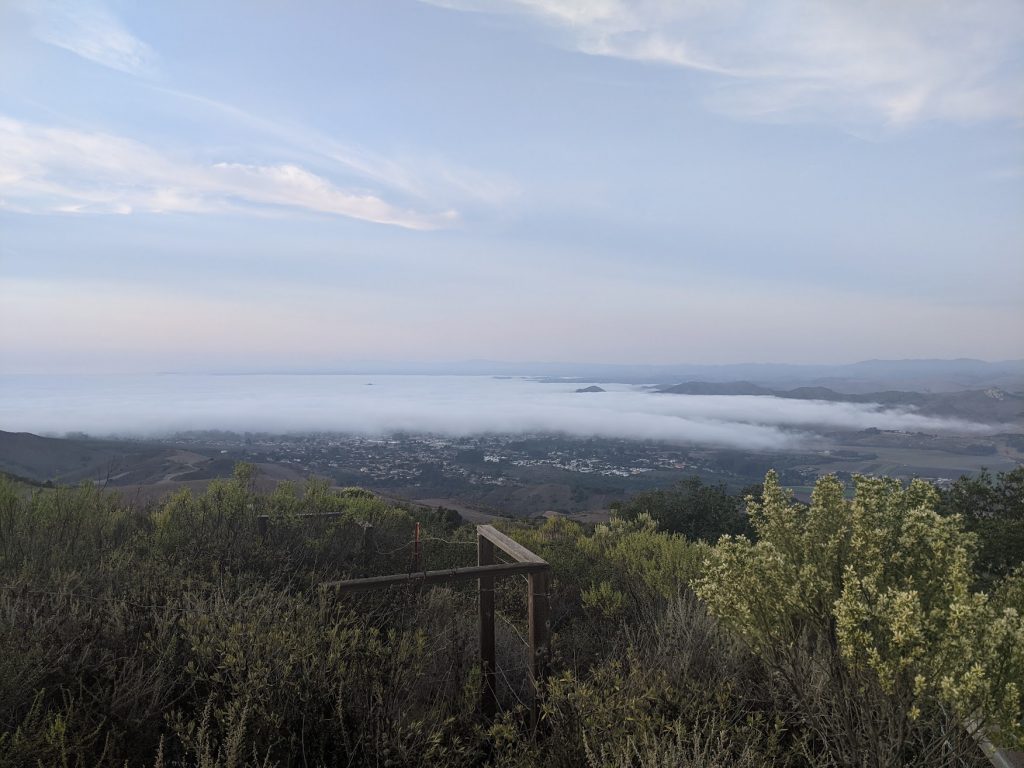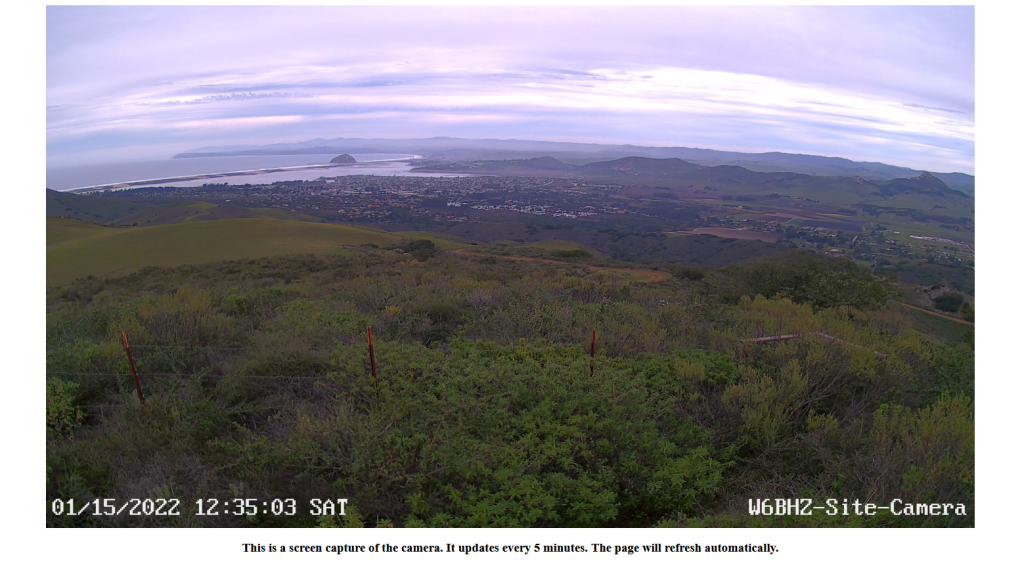A few months ago, the Cal Poly Amateur Radio Club was given the opportunity to install an APRS Igate/Digipeater at the WB6MIA repeater site above Los Osos, California off of Clark Valley Road (hence the name). The Digipeater will increase APRS coverage up the coast on Highway 1, which is especially useful for the club’s participation in the SLOBC Lighthouse Century Ride, where we usually have APRS trackers.

I had also been learning about the Amateur Radio Emergency Data Network (AREDN) for a few months now and figured it would be useful to local operators to put up a relay node since we had site access. We decided to put up a 5.8 GHz (Rocket M5) node since this would have less interference from Part 15 transmitters and the WISPs at the site. We also happened to have a surplus of 5.8 GHz gear.
The Plan
We planned to originally install just an AREDN node and a digipeater, but we since realized that the AREDN would not be super useful (especially in an area where the network is not built out) without some services. We decided to install a camera (Reolink RLC-420) at the site to provide a live camera accessible over the internet and the mesh.
The Buildout
Over several weeks in late 2021 we built out the AREDN site. At first, we had one ethernet cable running from the radio vault to the rocket and camera. This caused problems since the Mikrotik hAP (loaded with AREDN firmware) needed to be on VLAN2 in order to talk to the camera. We also had a PoE switch on the mast (MikroTik PowerBox Pro) which worked well, but was another point of failure.
The next phase of install was a few months later, where we fixed the network problems by redesigning the whole setup. Thanks to the WISP at the site who provided more ethernet runs, we were able to get dedicated cables for the Camera and the AREDN node. This allowed us to tag each port with the appropriate VLAN tags (VLAN2 for AREDN node-node communication, also called “Device-to-Device”, and VLAN1 for LAN traffic). We also changed the AREDN settings to give each device on the LAN a mesh IP, so we don’t have to worry about port forwarding.
Thanks to Greg KM6FRE who donated a camera, we were able to get it set up and served on the mesh. In the AREDN config page there is a setting for port forwarding and advertising a service on the node. Ryan KN6REG and KM6FRE then created a web page on a Raspberry Pi at the site which has been set up for remote access into the mesh.

In the future, we hope to add links to Cuesta Peak and back to the Cal Poly campus to build out the AREDN network. But for now, we’re pretty happy with our work 🙂